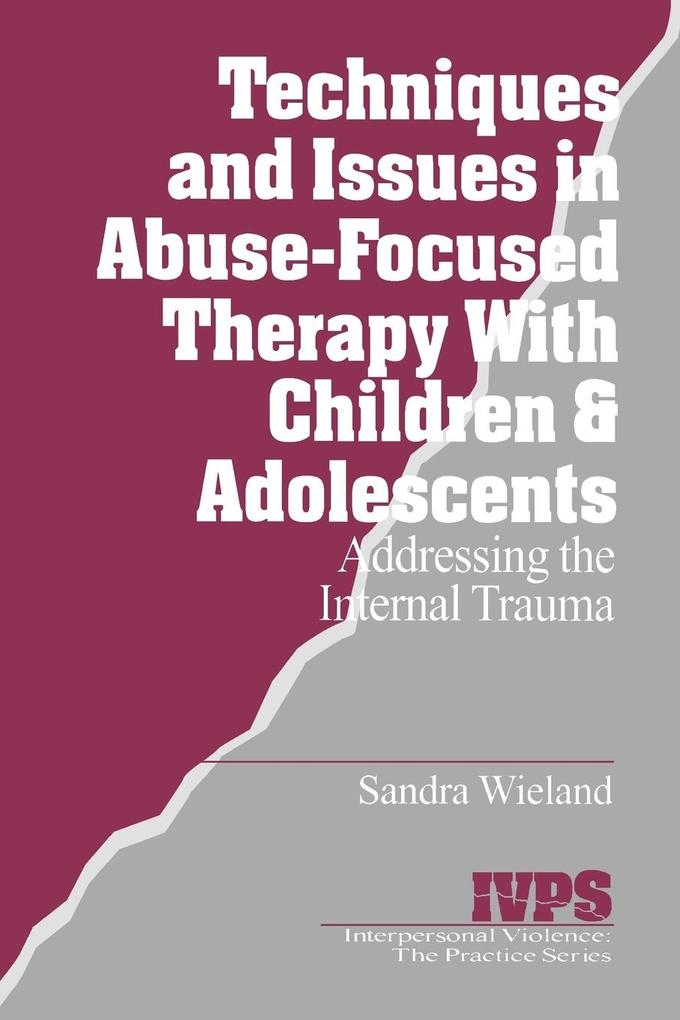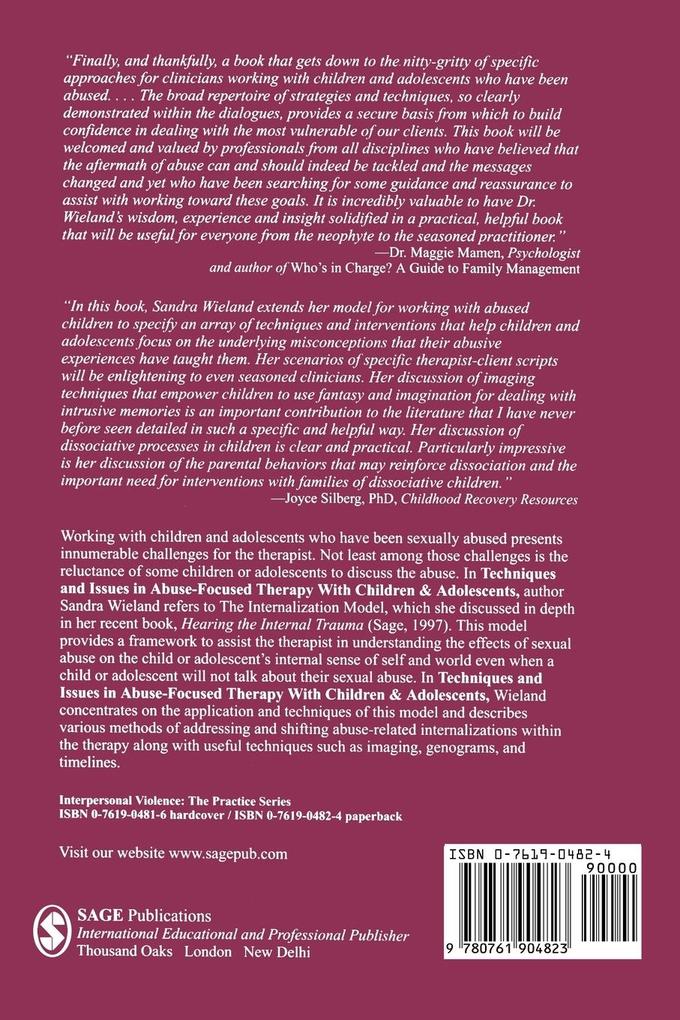
Zustellung: Mo, 26.05. - Fr, 30.05.
Versand in 6 Tagen
VersandkostenfreiBestellen & in Filiale abholen:
How can therapists deal effectively with children or adolescents who have been sexually abused - but refuse to discuss their experiences? Working with such young people presents innumerable challenges for the therapist. In this book, Sandra Wieland describes `The Internalization Model', which provides a framework to help therapists understand the effects of sexual abuse on children's or adolescents' internal sense of self and world, even when the child does not talk about the abuse.
Ways of addressing and shifting these abuse-related internalizations within the therapy are described, together with specific techniques such as imaging, genograms and time-lines. Other topics explored include: sexuality; dissociation; and resistance by the child, parent or therapist.
Ways of addressing and shifting these abuse-related internalizations within the therapy are described, together with specific techniques such as imaging, genograms and time-lines. Other topics explored include: sexuality; dissociation; and resistance by the child, parent or therapist.
Inhaltsverzeichnis
PART ONE: THE CHILD S TRAUMA
Understanding the Child s Trauma
The Internalization Model
PART TWO: TECHNIQUES
Addressing the Child s Internalizations
Therapy
Working Within
Imaging
Placing the Abuse in Context
Genograms, Time-Lines, Messages and Myths
PART THREE: ISSUES
Engaging the Parts
Working with Dissociation
Reconnecting to the Body
Sexuality
Avoiding the Thoughts
Resistance
PART FOUR: THE ADOLESCENT S EXPERIENCE
Therapy
The Adolescent Comments
Understanding the Child s Trauma
The Internalization Model
PART TWO: TECHNIQUES
Addressing the Child s Internalizations
Therapy
Working Within
Imaging
Placing the Abuse in Context
Genograms, Time-Lines, Messages and Myths
PART THREE: ISSUES
Engaging the Parts
Working with Dissociation
Reconnecting to the Body
Sexuality
Avoiding the Thoughts
Resistance
PART FOUR: THE ADOLESCENT S EXPERIENCE
Therapy
The Adolescent Comments
Produktdetails
Erscheinungsdatum
01. September 1998
Sprache
englisch
Seitenanzahl
256
Autor/Autorin
Stacy Wieland, Sandra Wieland
Verlag/Hersteller
Produktart
kartoniert
Gewicht
421 g
Größe (L/B/H)
229/152/15 mm
ISBN
9780761904823
Entdecken Sie mehr
Bewertungen
0 Bewertungen
Es wurden noch keine Bewertungen abgegeben. Schreiben Sie die erste Bewertung zu "Techniques and Issues in Abuse-Focused Therapy with Children & Adolescents" und helfen Sie damit anderen bei der Kaufentscheidung.











